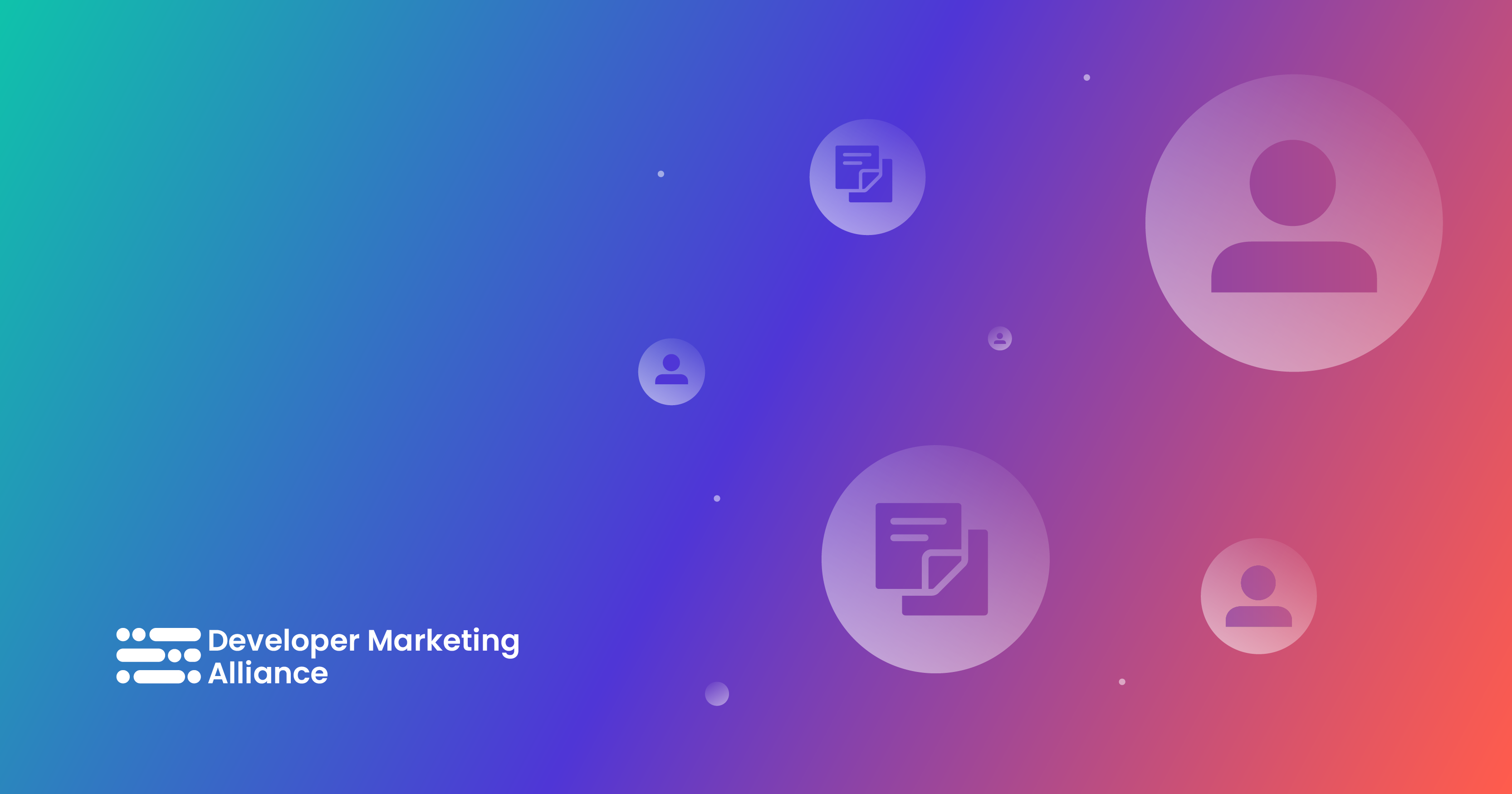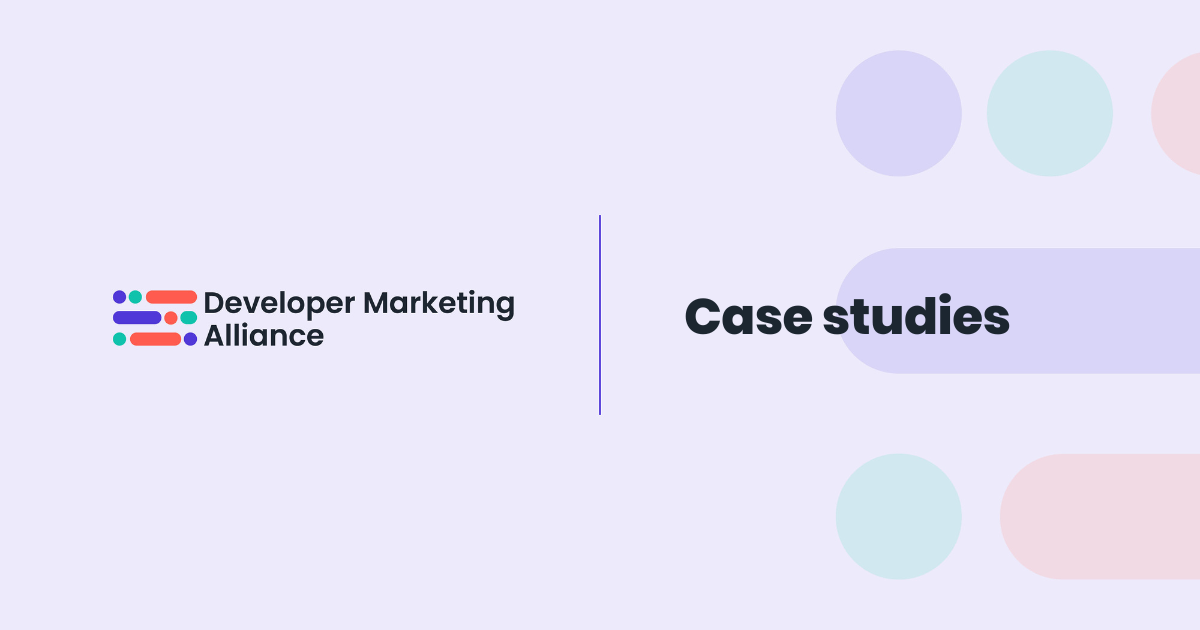As a developer marketer, there are many benefits to adopting a SaaS (Software as a Service) model, including affordability, scalability, and ease of use, which is why SaaS has transformed the way businesses operate.
This market is estimated to reach 195 billion USD in 2023 – amazing news if you’re in the SaaS or SaaS product marketing business! However, it also means there’s plenty of competition.
And with so many SaaS companies in the market, you may find it challenging to attract new customers, reach your target audience, boost your brand awareness, and drive sales. This is where SaaS marketing comes in.
Let’s explore some SaaS marketing practices and tactics to help you stand out from the crowd:
- What is SaaS marketing?
- What distinguishes a SaaS platform from regular software applications?
- B2B SaaS product marketing
- What is B2D SaaS?
- B2D and B2B SaaS marketing strategies
- What is API SaaS?
- What is a SaaS marketing funnel?
- What is a SaaS sales funnel?
- SaaS competitive analysis
- What is SaaS content marketing?
- Creating a SaaS content strategy
- How to build a SaaS marketing plan
- How to launch a SaaS product
- How to market a SaaS product

Psst! Why not download this article in ebook format, so you'll always have these insights at your fingertips?
What is SaaS marketing?
SaaS marketing refers to the strategies and tactics used to promote Software-as-a-Service products. The goal is to find potential customers, convince them to pay for the product or service, and then keep them happy and coming back for more.
This type of marketing involves a combination of inbound and outbound marketing tactics, including content marketing, search engine optimization (SEO), social media, email, and PPC.
When marketing a SaaS product, you want to build awareness and educate people about its benefits, since SaaS marketing is all about helping companies reach and connect with their target audience – and convincing them that their product is the best solution for their needs.

What distinguishes a SaaS platform from regular software applications?
A SaaS platform differs from traditional software applications in several ways, including:
- Accessibility – SaaS platforms are accessed over the internet without the need for users to install and maintain software locally. Traditional software, on the other hand, tends to be installed on user's computers or servers.
- Deployment and updates –SaaS platforms are centrally deployed and managed by the provider, meaning updates and improvements are automatically available to everyone, and users don't need to manually update the software on their devices.
- Scalability – Another thing that distinguishes a SaaS platform from regular software applications is that they're designed to be scalable, so they can handle varying degrees of user demand and accommodate growing customer needs. Often, there's no need to make infrastructure changes!
- Subscription model – SaaS is typically offered as a subscription with tiers and different pricing. Users pay a recurring fee to access the software and its features, while regular applications tend to be one-time purchases.
- Multi-tenancy – SaaS are built to serve multiple users (or tenants) from a single infrastructure, which allows SaaS companies to share resources more efficiently and optimize costs.
- Customization – Another thing to consider about what distinguishes SaaS from regular software applications is that these platforms provide a lot of flexibility in regards to customization and configuration. Users can easily adapt the software to their needs by choosing certain features or integrations, for example.
- Support – SaaS platform often include ongoing customer support, maintenance, and updates as part of the subscription offered. Companies offering SaaS products are responsible for managing the infrastructure and ensuring the software performs well.
B2B SaaS product marketing
B2B SaaS product marketing refers to the marketing of software as a service products, mainly to other orgs. This type of marketing is focused on promoting the benefits and features of a SaaS product to potential customers, as well as convincing them to buy and use the product in their operations.
The goal of B2B SaaS product marketing is to position the product as a valuable solution to the challenges faced by other businesses and to build trust with potential customers through effective communication and branding.
This may involve creating great content, such as case studies, white papers, and demos to educate developers, as well as using tactics like social media, ads, email, and content marketing to reach a wider audience.
Overall, B2B SaaS product marketing is a vital component of the growth and success of any SaaS business, as it helps to attract and retain customers, build brand recognition, and increase revenue.
What is B2D SaaS?
B2D SaaS or business-to-developer software as a service, is all about software products that are designed to help software devs, engineers, and other technical professionals to build and manage their own products more efficiently.
B2D SaaS products are usually marketed to businesses that employ developers, as well as to individual developers themselves.
B2D SaaS companies provide many tools and services that developers can use to speed up the development process, improve collaboration, and manage various aspects of their work.
Some B2D SaaS products include integrated development environments (IDEs), version control systems, continuous integration and delivery (CI/CD) tools, bug tracking software, and project management platforms.
These products have a focus on technical functionality, ease of use, and rapid deployment, and often have APIs that allow developers to integrate them into their own workflows and tools.
The goal is to help devs streamline their work, reduce development time, and deliver higher-quality products.

B2D and B2B SaaS marketing strategies
We’re talking about this in more detail in our section about how to market a SaaS product, but here are some overall B2B SaaS marketing strategies you can consider when marketing your product to a developer or company:
- Create high-quality content, such as blog posts, whitepapers, and case studies.
- Optimize your content and website for search engines to increase visibility and traffic.
- Use paid advertising channels, like LinkedIn Ads, Google Ads, and Facebook Ads.
- Focus on account-based marketing (ABM), which involves targeting specific accounts and tailoring your marketing messages to their specific needs and pain points.
- Host events like webinars and hackathons, which can help you engage with your audience, showcase your expertise, and increase your influence.
- Build email lists and send out targeted email campaigns to help you nurture leads.
What is API SaaS?
API SaaS refers to a type of software service that provides access to pre-built APIs (Application Programming Interfaces) that can be used to enable specific functionalities in applications or systems.
Providers offer a range of APIs that can be used to perform various tasks, such as accessing data, integrating with third-party services, or automating workflows. These APIs are typically delivered as a cloud-based service, meaning users can access them via the internet without having to install or maintain software locally.
Just like with SaaS marketing overall (and developer marketing), API SaaS providers ensure that devs have the documentation and resources they need to use the product effectively. Some may offer development tools or SDKs (software development kits) to facilitate this process.
This type of product has become popular in recent years because it’s a low cost way for businesses to access powerful APIs without having to build and maintain them themselves.
What is a SaaS marketing funnel?
A SaaS marketing funnel encompass several stages of the developer journey for a SaaS product: awareness, interest, evaluation, conversion, retention, and advocacy.
By understanding and optimizing each stage of the SaaS marketing funnel, you can effectively guide potential customers through the journey, maximize conversions, and foster long-term customer relationships.
When marketing SaaS products to developers, you want to make sure you pick tactics that work with this technical audience, such as documentation, how-to guides, email marketing, and even ads.
What is a SaaS sales funnel?
A SaaS sales funnel is designed to guide a developer through the product buying process and convert them into a paying customer.
The stages of a typical SaaS sales funnel are:
- Awareness – This first stage is where the potential customer becomes aware of your product, which can happen through various channels, including search engines, social media, or referral.
- Interest – Once someone is aware of your product, they’ll start showing interest, research your product, and learn more about it.
- Evaluation – This stage is all about a potential customer analyzing your product and comparing it to other options. They may also be looking for reviews, case studies, and testimonials from other customers.
- Conversion – This is where potential customers become paying customers. Developers may sign up for a free trial or buy a subscription directly.
- Retention – While attracting new customers is important, so is keeping the ones you have, so make sure you’re providing excellent customer service, onboarding, and ongoing support.
- Advocacy – This is the final stage, when the developer becomes an advocate for your product. They may recommend it to other devs and leave positive reviews!
Understanding the SaaS sales funnel, you can develop strategies and tactics that move potential customers through the funnel and convert them into paying customers.
The goal is to offer value every step of the way and build a solid (and long-lasting) relationship with the customer that leads to retention and developer advocacy – following DevRel’s (developer relations’) best practices!

SaaS competitive analysis
SaaS competitive analysis is all about evaluating and comparing your SaaS product against your competitors' to understand their strengths, weaknesses, opportunities, and threats (SWOT).
This helps you to make informed decisions about your product's positioning, features, pricing, and marketing strategies.
When conducting a SaaS competitive analysis, considering the following:
Identify competitors: Learn who the key competitors in your SaaS niche are. Look for companies offering similar solutions or targeting the same customer segments.
Product comparison:
- Compare the features and functionality of your SaaS product against your competitors, and identify what unique features or capabilities you offer.
- Evaluate the user experience, ease of use, and interface design of your product compared to competitors.
- Assess how well your product integrates with other tools and platforms compared to your competitors.
Pricing model:
- Analyze the pricing models of your competitors. Are they using subscription-based pricing, freemium models, or tiered plans?
- Compare your pricing to theirs. Are you more expensive, cheaper, or similarly priced? Consider the value your product offers relative to the price.
Target audience and positioning:
- What are the specific customer segments each competitor is targeting? Do they focus on a particular industry, company size, or user type?
- Understand how your value proposition differs from your competitors. What unique problems does your product solve for your target audience?
Market presence and reputation:
- Research the market share of your competitors. Are there dominant players, or is the market more fragmented?
- Analyze customer reviews and feedback for your product and your competitors. Identify common strengths and weaknesses mentioned by customers.
Marketing and branding:
- Evaluate how your competitors are positioning themselves in the market. What messages are they conveying to potential customers?
- Examine the marketing channels your competitors are using—social media, content marketing, PPC advertising, etc.
Customer support and success:
- Assess the quality of customer support offered by your competitors. Do they provide 24/7 support, live chat, knowledge base, etc.?
- Compare the onboarding experience your product provides with that of your competitors. A smooth onboarding process can lead to higher customer retention.
Innovation and roadmap:
- Research your competitors' future plans and product roadmaps. Are there any upcoming features or improvements they're working on?
- Consider whether your product offers cutting-edge technology or innovation that sets you apart from competitors.
SWOT Analysis: Summarize your findings in a SWOT analysis. Identify your SaaS product's strengths, weaknesses, opportunities in the market, and potential threats from competitors.
Actionable insights:
- Determine how you can differentiate your product from competitors based on your analysis.
- Identify areas where your product falls short and needs improvement to better compete.
- Highlight opportunities in the market that your product can leverage.
What is SaaS content marketing?
SaaS content marketing is tailored for companies that sell software on a subscription basis. The goals of SaaS content marketing includes educating audiences about the product, showcasing how it solves specific problems or how it addresses pain points, creating thought leadership, and building trust with potential customers.
Creating a SaaS content strategy
A SaaS content marketing strategy requires a well-thought-out plan aimed at attracting and retaining customers. While there are many different things you can do to create a powerful strategy, here are a few steps to take into account:
Identify your audience’s pain points
What motivates your audience’s purchasing behavior? What needs do they have? What problems are they facing? Nailing developer pain points is crucial and it’ll help you create your SaaS content strategy.
Consider the developer experience and the steps it takes your audience to get from the awareness stage to making a purchase.
Some common pain points include difficulty navigating your site or platform, poor customer service experience, and issues when trying to renew a subscription.
Conduct a content audit
Take stock of your existing content to identify gaps and opportunities, which will help you create a plan to fill in the gaps and repurpose content that has performed well in the past.
Consider what you’re trying to achieve with your content at all times, of course, since each piece of content you create must belong to a stage in your sales or marketing funnel – and meet the needs of your audience no matter where they are in the developer journey.
Define goals and metrics
Make sure you set up S.M.A.R.T. goals (specific, measurable, achievable, relevant, and time-bound) before creating your content campaigns, so you’re able to track and measure their success.
Choose metrics and KPIs relevant to the SaaS industry, such as:
- Free trial registrations
- Demo requests
- Monthly Recurring Revenue
- Customer Acquisition Cost
- Churn rate
- Average Revenue Per User
- Lifetime Value
- Net Promoter Score
- Active users

Develop a content plan
Create a plan that outlines the topics you’ll cover (informed by research), the formats you’ll use (i.e., blog posts, documentation, videos, and webinars), and all the channels you’ll use to distribute the content (such as email marketing and social media).
Create great content for developers
Your content should be well-researched, informative, practical, and engaging. The developer audience can be tough but if you focus on providing value to devs and avoid being too promotional, you boost your chances of success!

Optimize your content
Don’t forget to perform keyword research to optimize your content for search engines, as this will help you rank higher and attract more organic traffic to your site.
Distribute and promote your content
Social media, email, and developer communities are just some of the platforms you can use to both distribute and promote your content. Make it shareable and encourage developers to share it with their networks too!
Measure and analyze
Using analytics tools, you can track and measure your content’s performance, identify opportunities for improvement, tweak existing content, and understand what works and what doesn’t.
How to build a SaaS marketing plan
It’s important to create a SaaS marketing plan because:
- It offers you a clearer picture of your audience and competitors,
- Helps you make the most of your resources by applying them to the best tactics,
- Allows you to tailor your messaging to your audience,
- Helps you create better products,
- And makes it easier for you to spot opportunities to forge and maintain relationships with your developer audience.
To create your SaaS marketing plan, you need a comprehensive approach that involves several channels and strategies. Here are a few ideas/steps to follow when looking to build your plan:
Define your target audience
Getting into the developer mindset, as well as understanding the unique needs and pain points of your audience should be your first step. What’s your segment of the market looking for? How can you help them achieve their goals?

Set your goals
You must also determine what you want to achieve with your marketing efforts. Do you want more leads, website traffic, or long-term customer retention? Setting goals can help you better visualize what the SaaS marketing plan will look like and keep you on track from start to finish.
Create tailored messaging
You must also have a clear and concise messaging strategy in place, as that will help you communicate the value of your SaaS product to your target audience. Make sure you have a unique value proposition too!
Leverage your content marketing
As mentioned above, create a SaaS content strategy that includes different types of content, from blogs and documentation to ads and tutorial videos. Understand how your audience consumes content and where they hang out, so you can better reach out to them.
Don’t dismiss paid advertising
There’s a wrong and right way to advertise to developers, and many marketers will say paid ads aren’t worth it. However, it all depends on your strategy and how you execute it. Pay-per-click ads, for example, can drive a lot of traffic to your website and boost sales, so consider platforms like Google Ads, Facebook Ads, and LinkedIn Ads.
Include social media
Twitter has a huge developer audience, for instance, so consider social media channels when coming up with your SaaS marketing plan! Besides Twitter, there’s also Reddit, Discord, GitHub, and many other dev communities!

How to launch a SaaS product
Launching a SaaS product requires a powerful strategy that focuses on developing a high-quality product, building a strong brand, and engaging with your technical audience.
What does launching a SaaS product entail?
Create a Minimum Viable Product (MVP)
A Minimum Viable Product is a development technique where a new product is launched with the bare minimum features required to make early adopters satisfied. This approach is often used to test the market and gauge demand before investing a lot of resources in full-scale development.
Creating an MVP means building a user interface, defining key features, and testing the product with real users.
Advantages and disadvantages of a Minimum Viable Product
There are several advantages to using an MVP, including:
- Faster time-to-market (since the product has minimal features and can be developed quickly), which helps you to begin generating revenue.
- Lower development costs, since developing a Minimum Viable Product uses fewer resources. It also allows startups and other small companies to validate their ideas before launching the product into the market.
- Feedback from users. MVPs offer the opportunity to get feedback from early adopters and to include their suggestions into future versions of the product. You can improve your offerings (and your chance to succeed in the market) by doing this.
- Reduce the risk of failure by testing the marketing and validating your ideas before investing a lot of money, time, and/or effort into full-scale development.
However, despite this, there are also a few downsides to creating an MVP, such as:
- Users get limited functionality, which may not leave them satisfied and limit adoption rates.
- You may get more negative feedback if the MVP doesn’t meet developers’ expectations, which can hurt your reputation.
- If your competitor launches a full-scale product while you're still testing the market with your MVP, you may lose competitive advantage.
- Minimum Viable Products may not be scalable in the future as well, as they might not be able to handle a larger user base or support additional features.

Perform market research
This is a must when marketing any products, especially SaaS ones! Market and competitor research allows you to understand your target audience and their needs, as well as the competitive landscape. Make sure to send out surveys, analyze industry trends, etc.
Have a strong brand
While this may be easier said than done, it’s still crucial, as a strong brand identity and a unique value proposition will resonate with your audience. This includes creating a brand name, logo, messaging, and visual identity.
Create a marketing plan
Before launching your product, you must already know how you’re going to market it. Your marketing plan outlines your strategy for reaching out to developers and engaging with the community, for example, as well as the messaging you’ll be using, the tactics and methods you want to focus on, etc.

Beta test your product
It goes without saying that getting developers to test out your product is vital! Get feedback from real users, refine the product, and make sure it meets the needs of your audience.
Provide great customer support
Support for your product should be ongoing, as well as exceptional. This leads to developer satisfaction, customer loyalty, word-of-mouth referrals, and more.
Focus on developer experience
Developer experience, or DX, is critical to the success of your product. So, create something that’s easy to use and meets the needs of your target market. Every company’s or product’s developer experience will be different, so make sure you’re nailing the right pain points.
Ensure security and data privacy
With more and more data breaches in the news (with the U.S. Marshalls Service, Activision, and Pepsi Bottling Ventures each suffering data breaches in February 2023 alone), and global cybercrime costs expected to reach 10.5 trillion USD annually by 2025, it’s clear cybersecurity and data privacy are increasingly more important.
Not only should your product be secure, you should also emphasize this security and how compliant it is with relevant data privacy regulations.
Collaborate with developer influencers
Another step to launch your SaaS product is to collaborate with influencers who can help increase your brand awareness and drive adoption rates. Identify key people in your industry (for example, ensure their values align with yours) and make sure they have a good following in your target market or are influential in your developer community.
How to market a SaaS product
Marketing a SaaS product requires a well-planned and executed strategy that focuses on identifying the target audience, understanding developers’ needs and challenges, and highlighting the unique value proposition of the product.
But how do you actually market a SaaS product to a developer audience?
Identify your developer personas
It bears repeating that you should start by defining the target market for your SaaS product. This includes understanding their pain points, their needs, the problems they have, the benefits they’re looking for in a product, etc.

Develop a unique value proposition
Having a clear and compelling value proposition that highlights the key benefits of your products and sets it apart from your competitors is vital. You may also want to write a positioning statement for a product!
Ensure your pricing strategy is on point
Another thing you must decide when marketing your SaaS product is your pricing strategy. After all, this is a factor that can influence a potential customer’s decision to buy or subscribe to a SaaS product.
So, setting the right price is one of SaaS marketing essentials for several reasons:
- To communicate the value of the product to developers – if you set the price too low, people may perceive it as low quality, but if the price is too high, you might not get people interested in your product.
- To ensure the business remains profitable – the price you choose should allow the company to generate revenue to cover costs and turn a profit.
- To improve customer retention and loyalty – if your pricing model is transparent and easy to understand, developers are more likely to trust your company and continue using the product.
Use targeted marketing channels
This means using several different channels that can help you to reach and engage with developers, from creating content (such as blogs and documentation) to advertising on social media, investing in paid ads, and doing email marketing campaigns.
Leverage customer reviews and testimonials
Reviews and testimonials are crucial for social proof (the concept that people can be convinced to trial or purchase a product after reading good reviews), as 95% of consumers read online reviews before buying a product, and 58% would rather pay more for a product with good reviews.
So, make sure you’re requesting developers to leave comments about your product and/or their experience, since reviews and expert testimonials can build trust and showcase the value of your product.

Offer free trials or demos
Developers love to get hands-on and demos and trials offer the perfect opportunity for them to experience your product for themselves. It’s all well and good to read blogs or watch a video about a product, but actually being able to dig in and explore all functionalities and understand the limitations of the product is a huge plus.
In fact, by providing them with this opportunity, you’re boosting the odds of developers turning into paying customers.
Nurture existing customers
Many companies focus all their efforts on getting new customers and fail to realize the importance of the audience they already have. Nurturing existing customers means hitting them with timely content, messaging tailored to their needs, great customer support, etc.
By doing this, you can build relationships with developers, increase retention rates, boost loyalty, get repeated business, and so much more.
Measure and optimize
Part of marketing a SaaS product includes tracking key metrics (such as customer acquisition cost, lifetime value, and churn rate), so that you can measure how successful your strategy is – and, of course, continually optimize it for better results in the future.
When marketing your SaaS product, you want to generate awareness, drive acquisition, and foster long-term loyalty, so strategies like these can help you achieve your goals.
We have plenty more guides where you can learn more about developer marketing, DevRel, developer communities, and personas:




